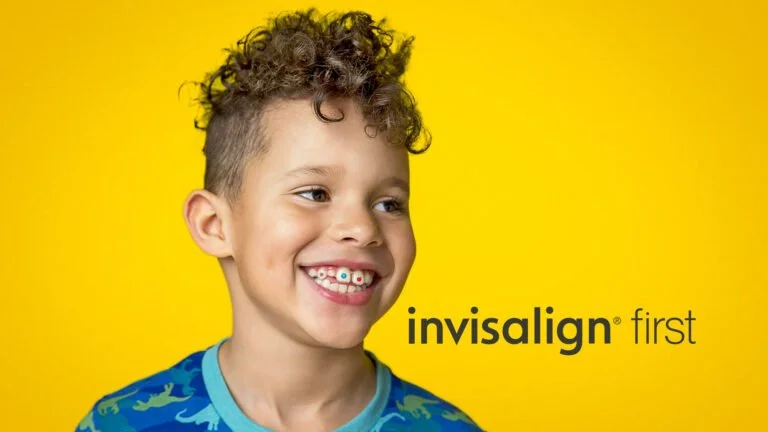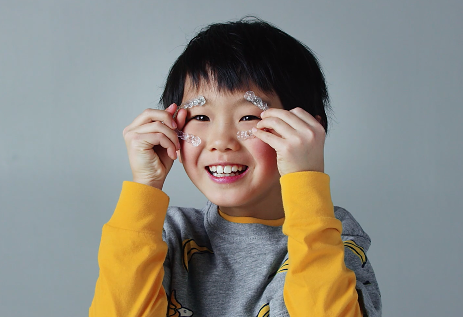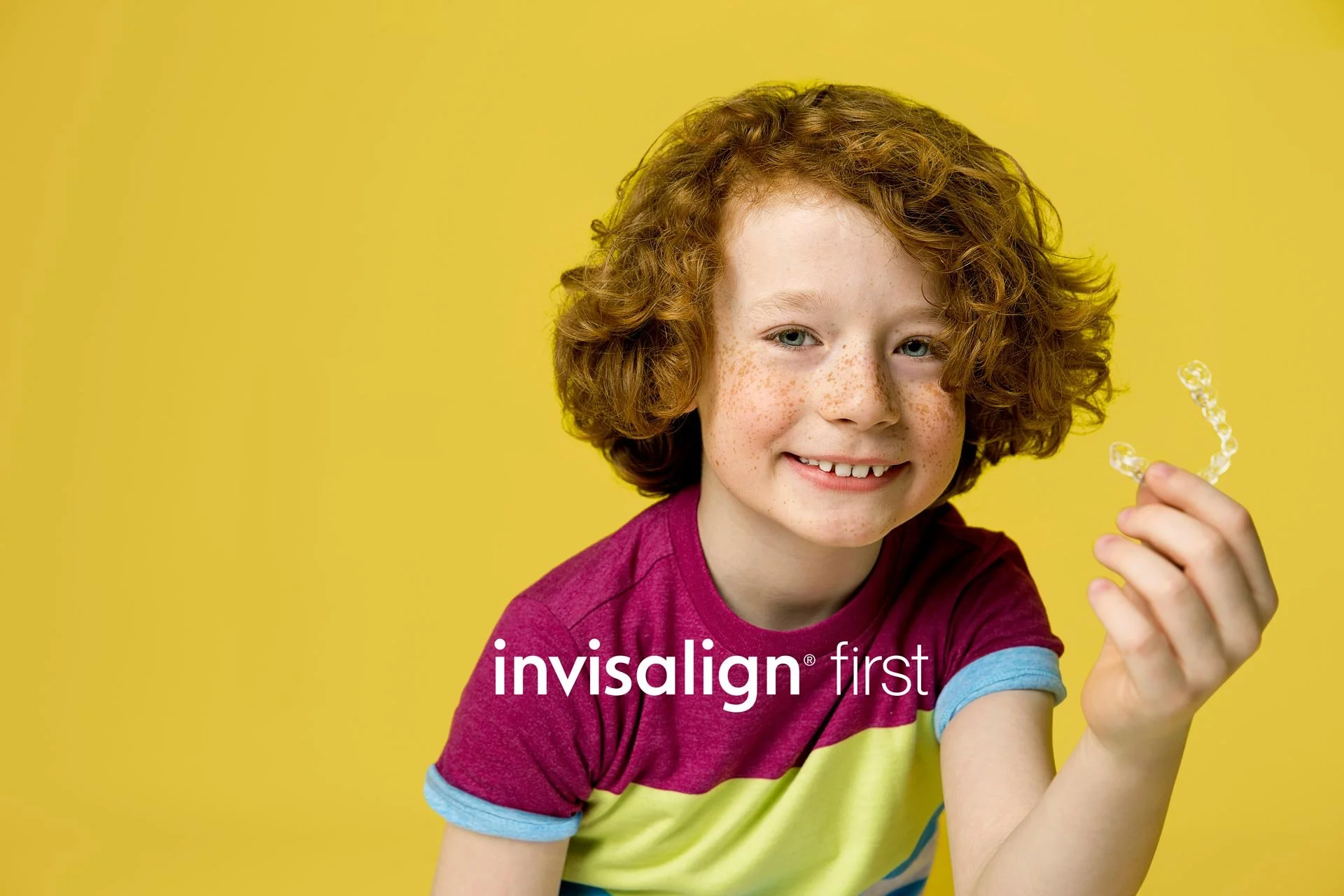Invisalign First – The Ideal Orthodontic Solution for Young Smiles
It’s one of those parenting milestones you don’t see coming: your seven-year-old still believes in the tooth fairy… and also needs an orthodontist?
We get it. It seems early—but that first visit to the orthodontist isn’t just about spotting crooked teeth. It’s about guiding the way a child’s mouth is growing, giving them the best foundation for a healthy, confident smile.
That’s where Invisalign First comes in.
What Is Invisalign First?
You’ve probably heard of Invisalign for teens and adults. But Invisalign First? That’s the version made just for younger kids—typically between ages 6 to 10, during what's called the "Phase 1" orthodontic window.
Think of it as the first step in a two-phase plan.
Invisalign First uses the same clear aligner tech as traditional Invisalign, but it's specially designed for growing mouths with baby teeth, adult teeth, and everything in between. It can be a mixed bag at those different ages and stages.
It’s gentle, effective, and totally customized. No metal. No expanders. Just a smile-friendly solution for kids who need a little extra orthodontic help (check out this resource to compare Invisalign with traditional braces).
Why Start Early?
This might surprise you, but the American Association of Orthodontists actually recommends an evaluation by age 7—even if everything looks fine.
Why so young?
Because some orthodontic issues are easier (and faster) to fix while a child’s jaw is still developing. Catching problems early—like crowding, crossbites, narrow arches, or spacing—can prevent more complex treatment down the road. A little care now can pay off in a big way later.
And remember, early treatment doesn’t always mean braces. Invisalign First can help guide growth, make room for adult teeth, and reduce the need for tooth extractions or surgeries later on.
How Invisalign First Works
The process starts with a quick, goop-free digital scan of your child’s teeth. From there, a custom set of aligners is created to guide their smile over time.
Each of these aligners is worn for about a week, with small, consistent changes that gently move teeth and shape the dental arch. These strategic adjustments help avoid the need for more extreme corrections later, offering yet another reason why starting sooner rather than later can be such a smart move.
Aligners are worn 20–22 hours per day, but they’re totally removable—great for meals, brushing, or special events. Like those popcorn movie nights. Most kids get the hang of it quickly with a little parental support. It can even be fun!
Invisalign First vs. Traditional Braces or Expanders
Wondering how Invisalign First stacks up against older methods like metal expanders or partial braces? Here's a quick side-by-side look:
| Feature | Invisalign First | Traditional Early Treatment |
|---|---|---|
| Visibility | Virtually invisible | Very noticeable (metal brackets/wires) |
| Comfort | Smooth, no poking wires | Can cause irritation or soreness |
| Hygiene | Removable for easy brushing & flossing | Requires brushing around brackets |
| Diet Restrictions | None – just remove aligners to eat | Many (no sticky, crunchy, or hard foods) |
| Emergencies | Rare (no breakable parts) | Common (broken wires, loose brackets) |
| Treatment Experience | High-tech, flexible, kid-friendly | Often rigid, more traditional |
Is My Child a Candidate for Invisalign First?
Great question, but it’s one only an orthodontist can fully answer with a personalized evaluation.
Generally speaking, Invisalign First can treat:
Crowding or spacing issues
Narrow dental arches
Crossbites or underbites
Protruding front teeth
Responsibility is a factor, too. Can your kiddo remember to wear the aligners? Will they keep them in a case? Most kids can handle it with a little routine and support from you—and we’ll help them build good habits along the way.
What Parents Love About Invisalign for Kids
We hear it all the time: “This is so much easier than braces.”
And it’s true. Invisalign First is a win for parents as much as it is for kids. You’re not dealing with broken brackets, emergency visits, or fights over brushing. Instead, your child can eat what they love, clean their teeth like normal, and smile confidently throughout the process.
Plus, it sets a tone of ownership and responsibility early on—kids start to feel like they’re part of the process, not just along for the ride.
Pro Tip: Find an Invisalign Specialist!
While Invisalign First is definitely a powerful tool, it’s only as effective as the orthodontist behind it. That’s why choosing a provider with specific experience in early orthodontic treatment makes all the difference. General dentists typically don’t have the tech and capabilities to really maximize the results.
For example, at Grace Orthodontics, we use advanced tools like iTero 3D scanning to spot issues early and design treatment plans that work with your child’s natural growth—not against it. We’ve helped dozens of young patients get the jumpstart they need without making the experience scary or stressful.
Take one look at our fun, jungle-themed exam room and you’ll see what we mean!
What’s Your Takeaway?
First, Invisalign First is a gentle, kid-friendly way to guide your child’s smile while their mouth is still growing. It’s clear, removable, and far more comfortable than traditional early treatment methods—no brackets, no wires, no restrictions.
Second, starting orthodontic care around age 7 might feel early, but it’s often the best way to prevent bigger (and more expensive) problems from developing down the road.
And the best part? Your child gets to keep being a kid—eating what they love, brushing like normal, and smiling confidently through every phase of treatment.
And lastly, if you're wondering whether your child is ready for early orthodontic care, we’re here to help. Schedule a consultation with our Fort Lee team, and let’s take a closer look at what’s possible for their growing smile.
FAQ
Q: What age is Invisalign First for?
A: It’s designed for kids between 6 and 10 years old, during the early “Phase 1” orthodontic window.
Q: Can kids really handle wearing aligners?
A: Yes! With a little support and structure, most kids adjust quickly—and many love how easy aligners are to use.
Q: How long does early orthodontic treatment take?
A: It varies, but most Invisalign First treatments last 6 to 12 months, depending on your child’s specific needs.
Q: What types of problems does Invisalign First treat?
A: It can help with crowding, spacing, narrow arches, crossbites, and early bite issues.
Q: Is Invisalign First more expensive than braces?
A: Costs are comparable to traditional early treatment, and many insurance plans cover a portion of it. We also offer flexible payment options.




